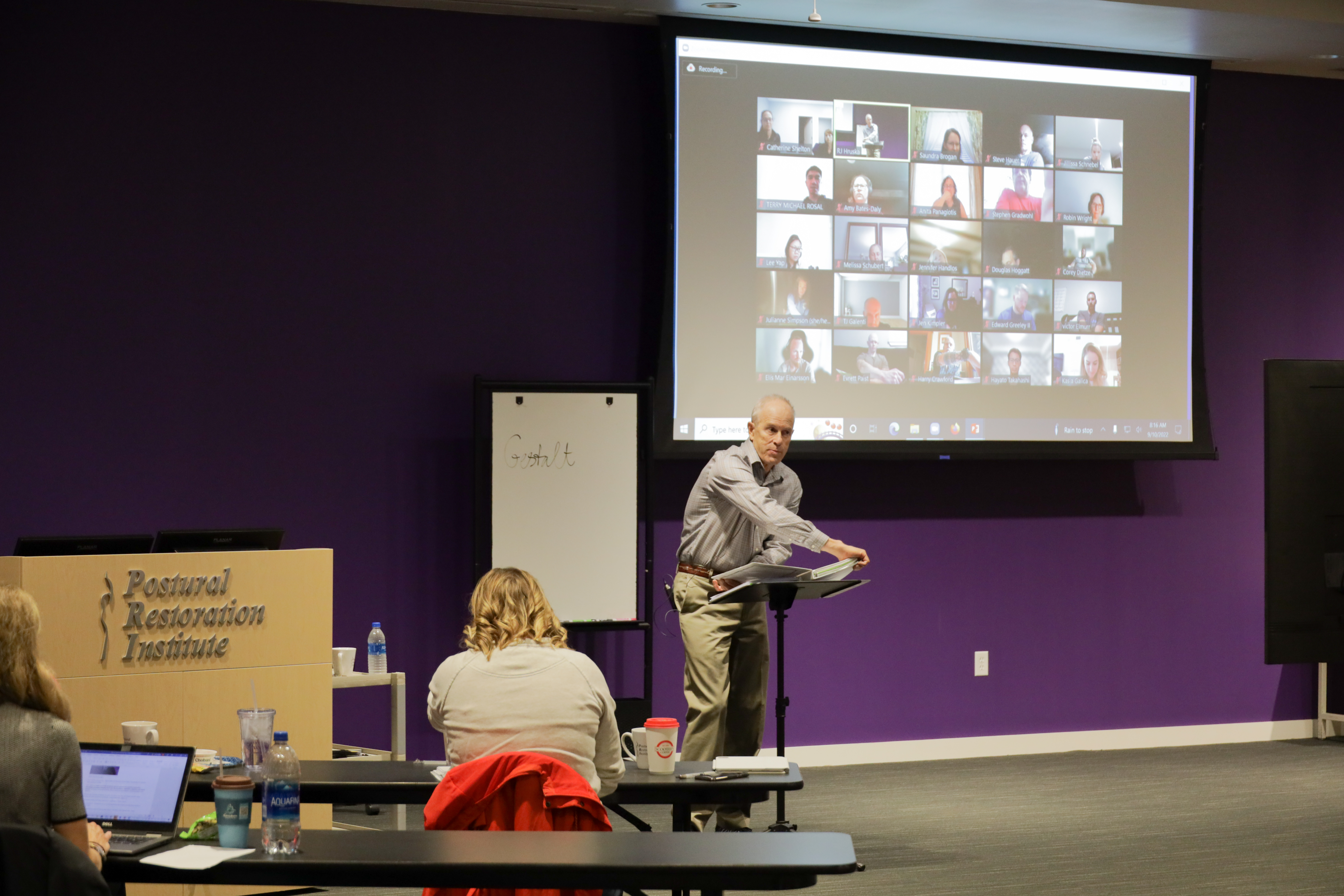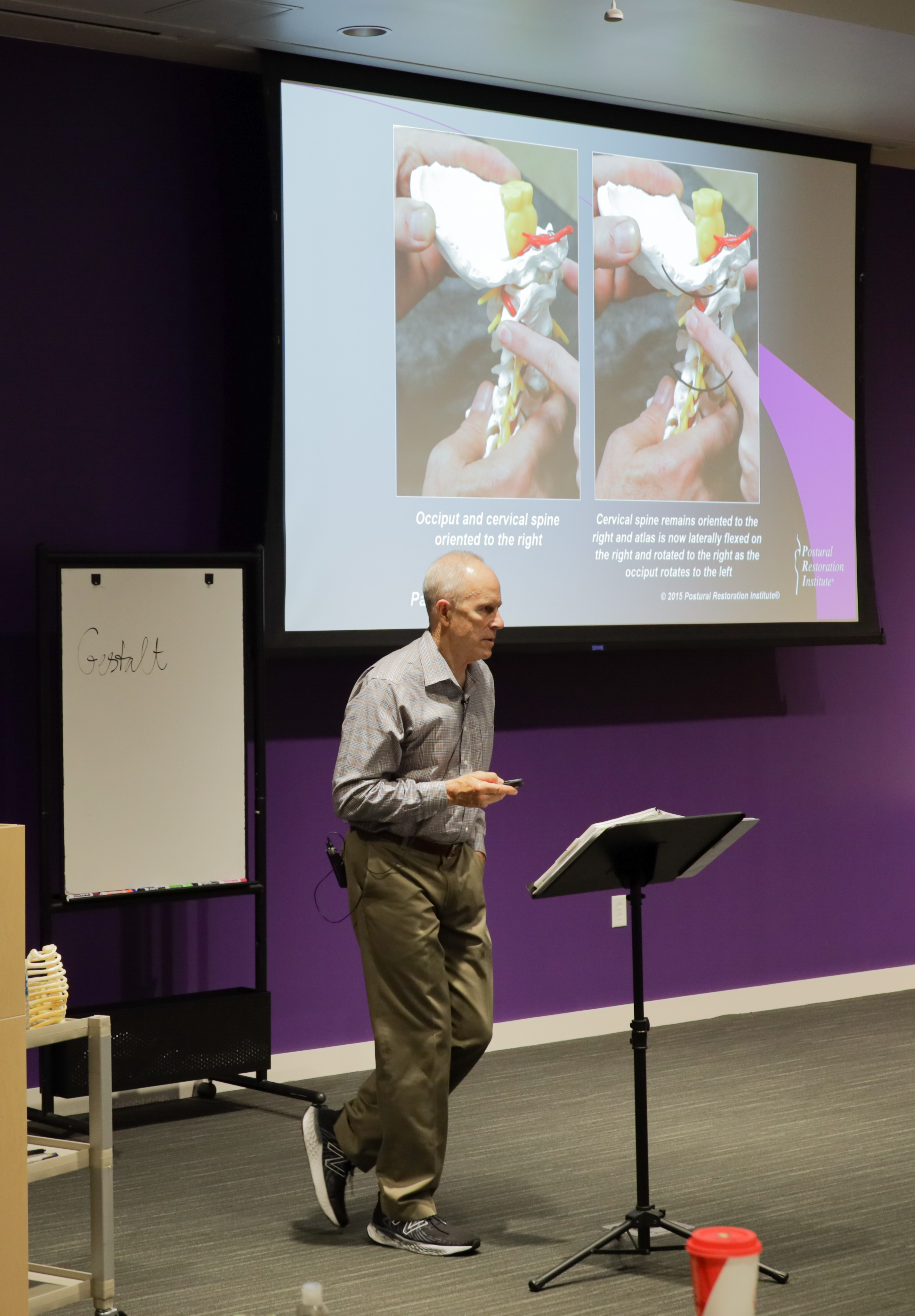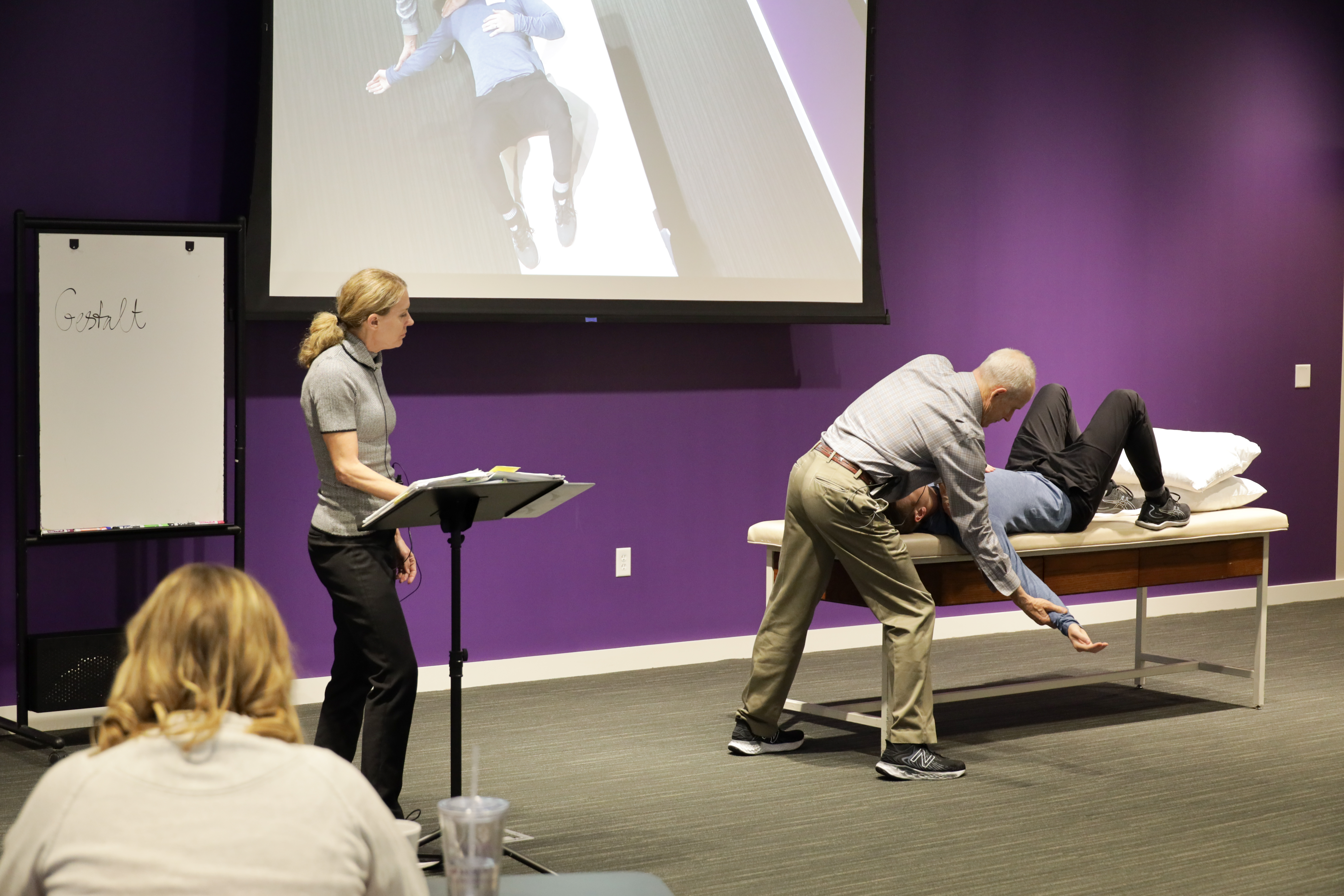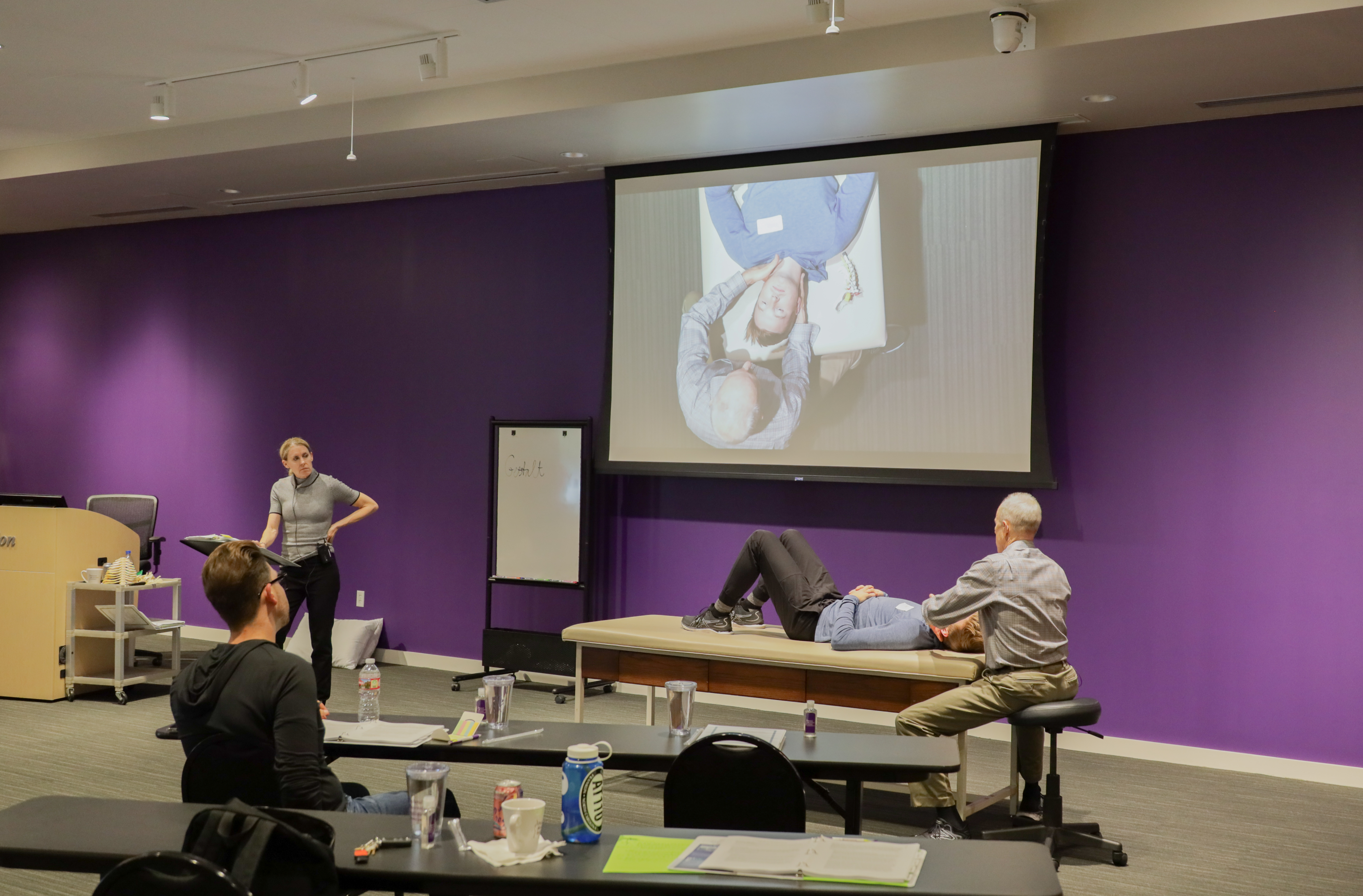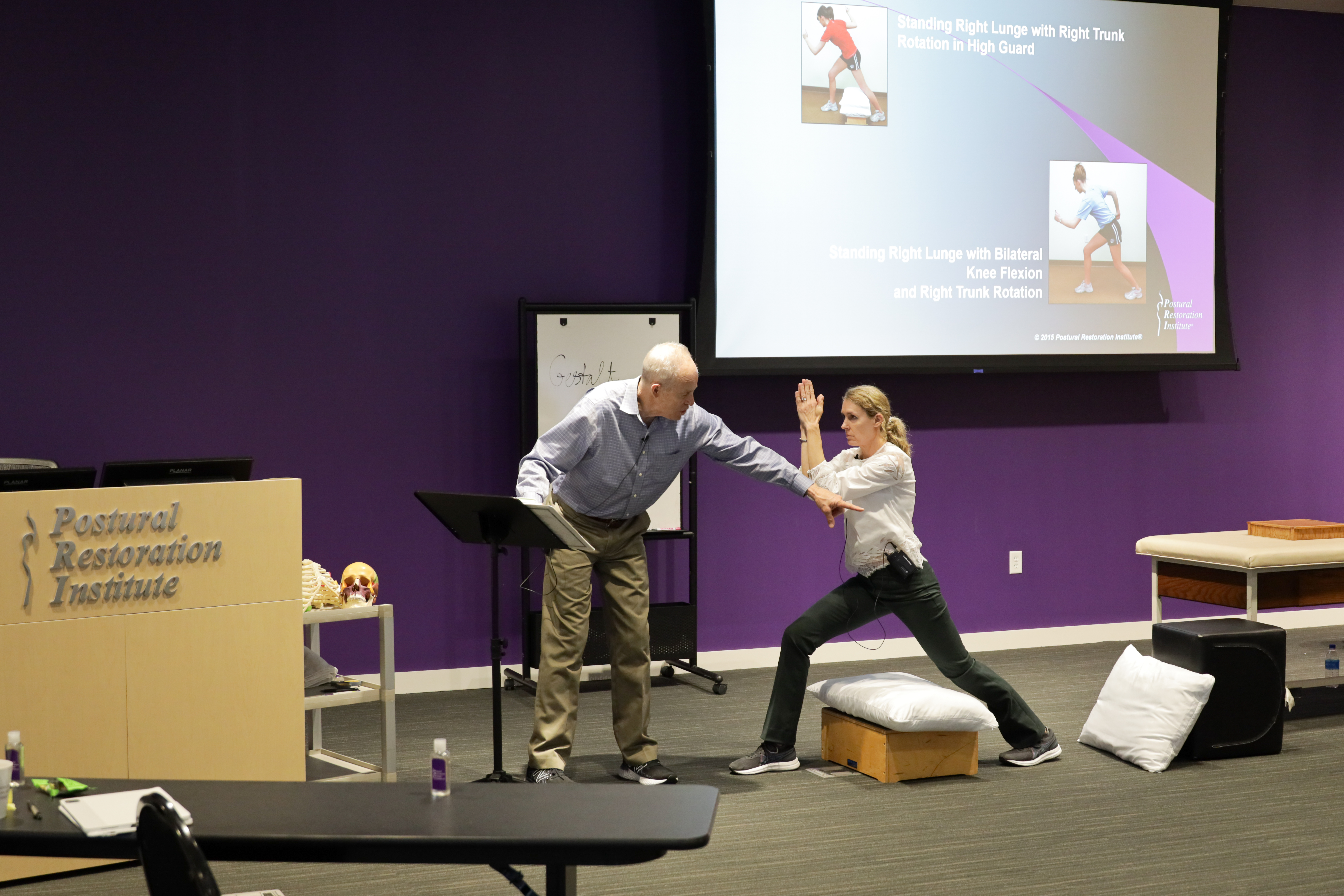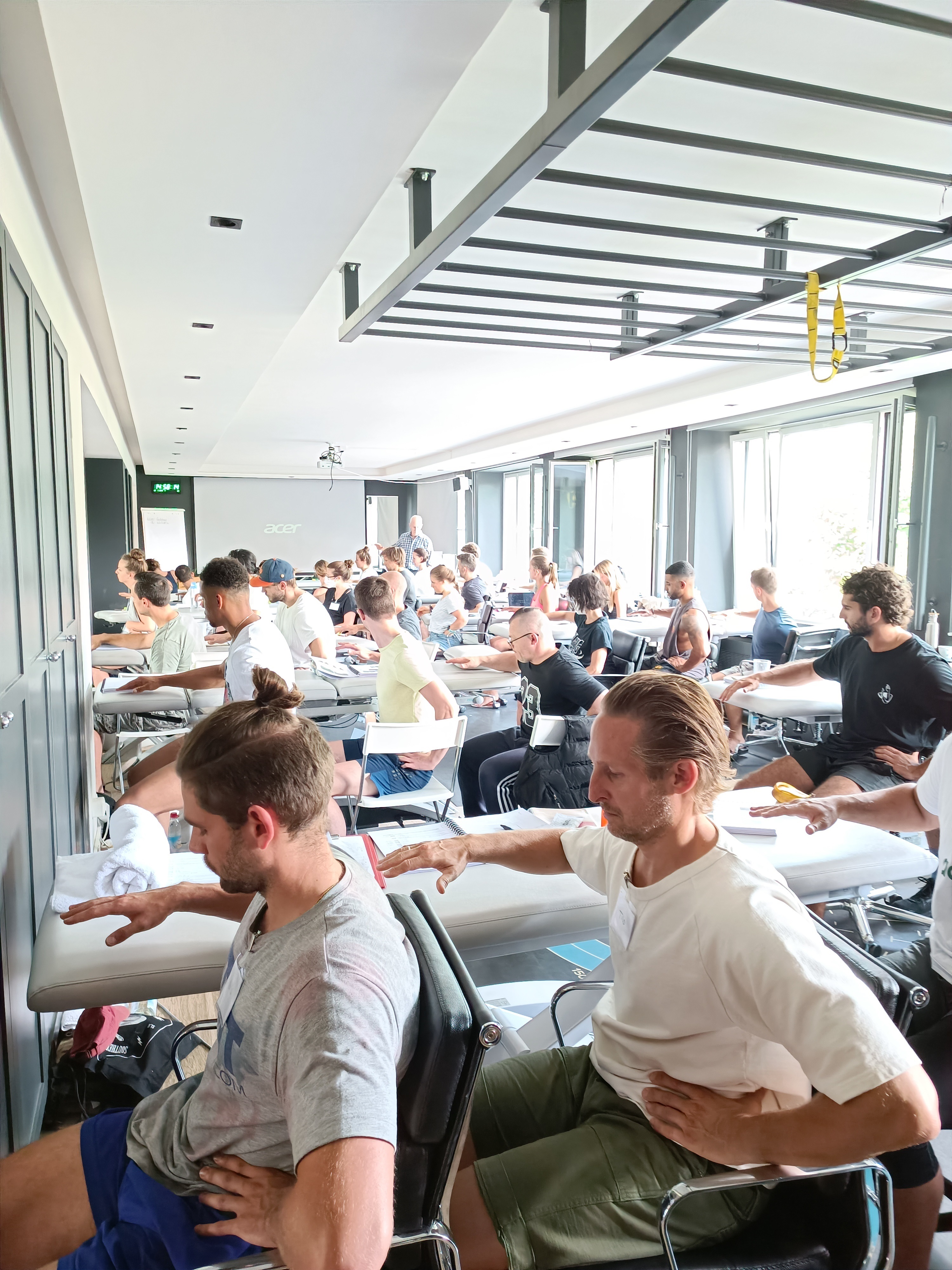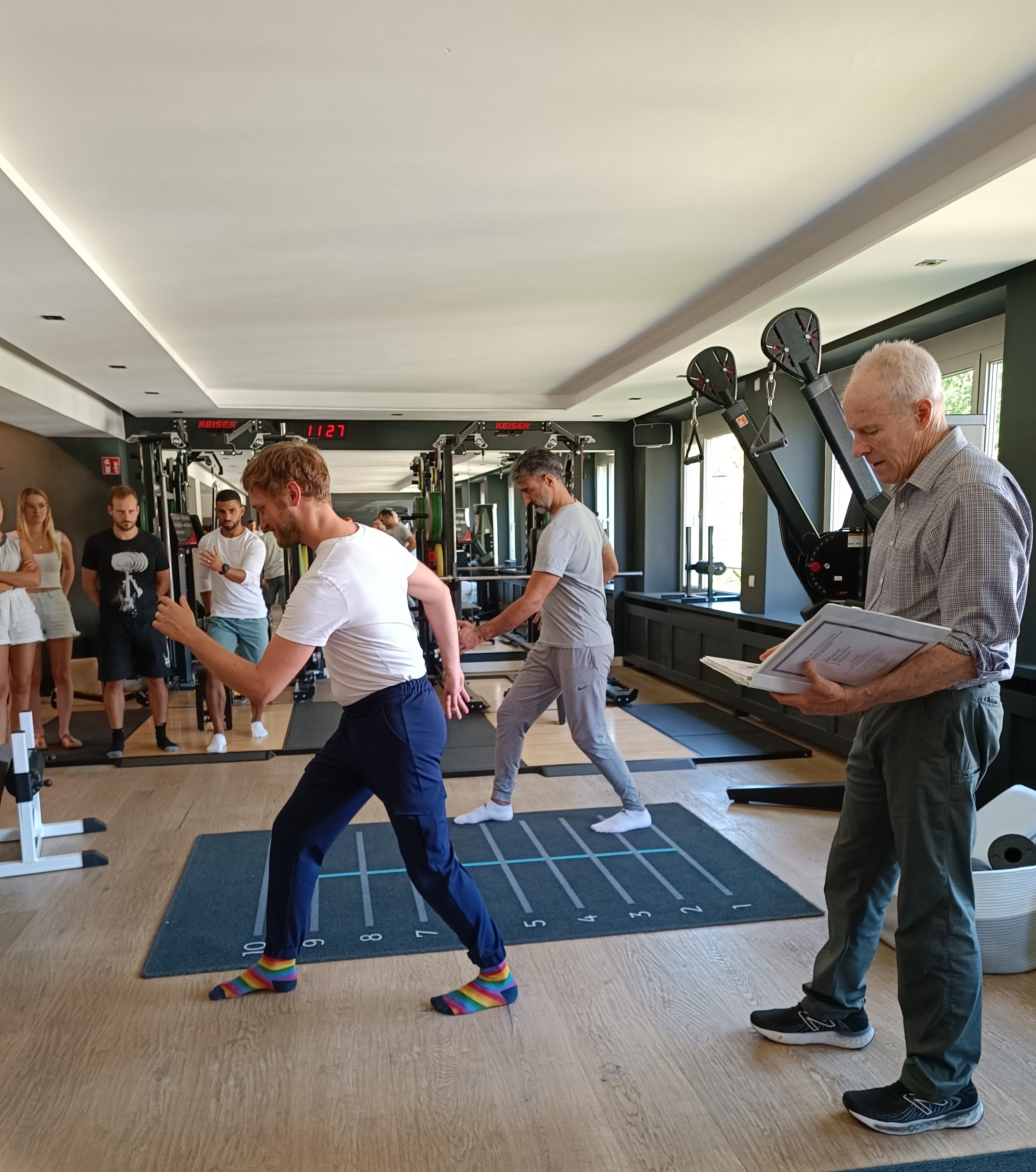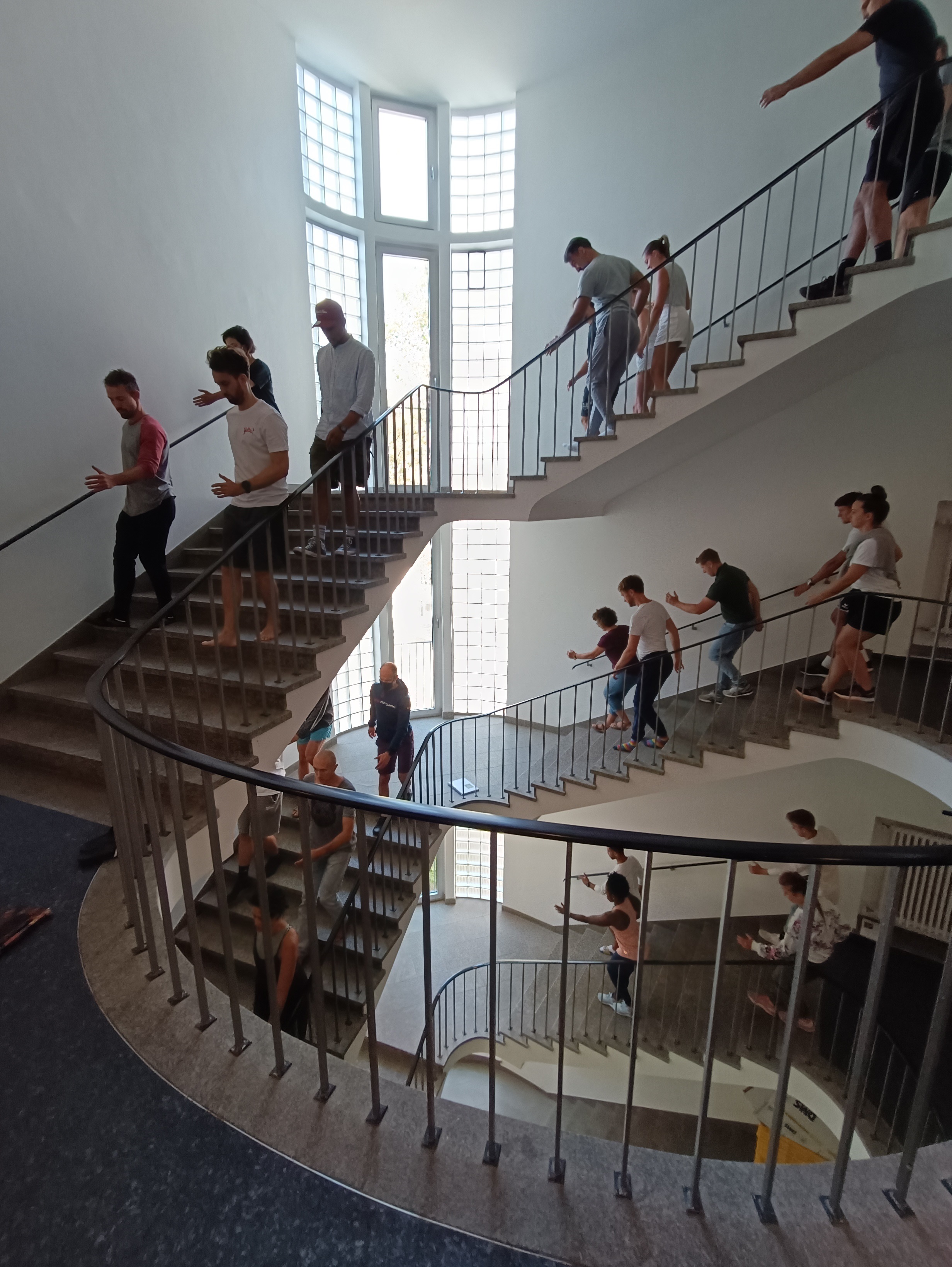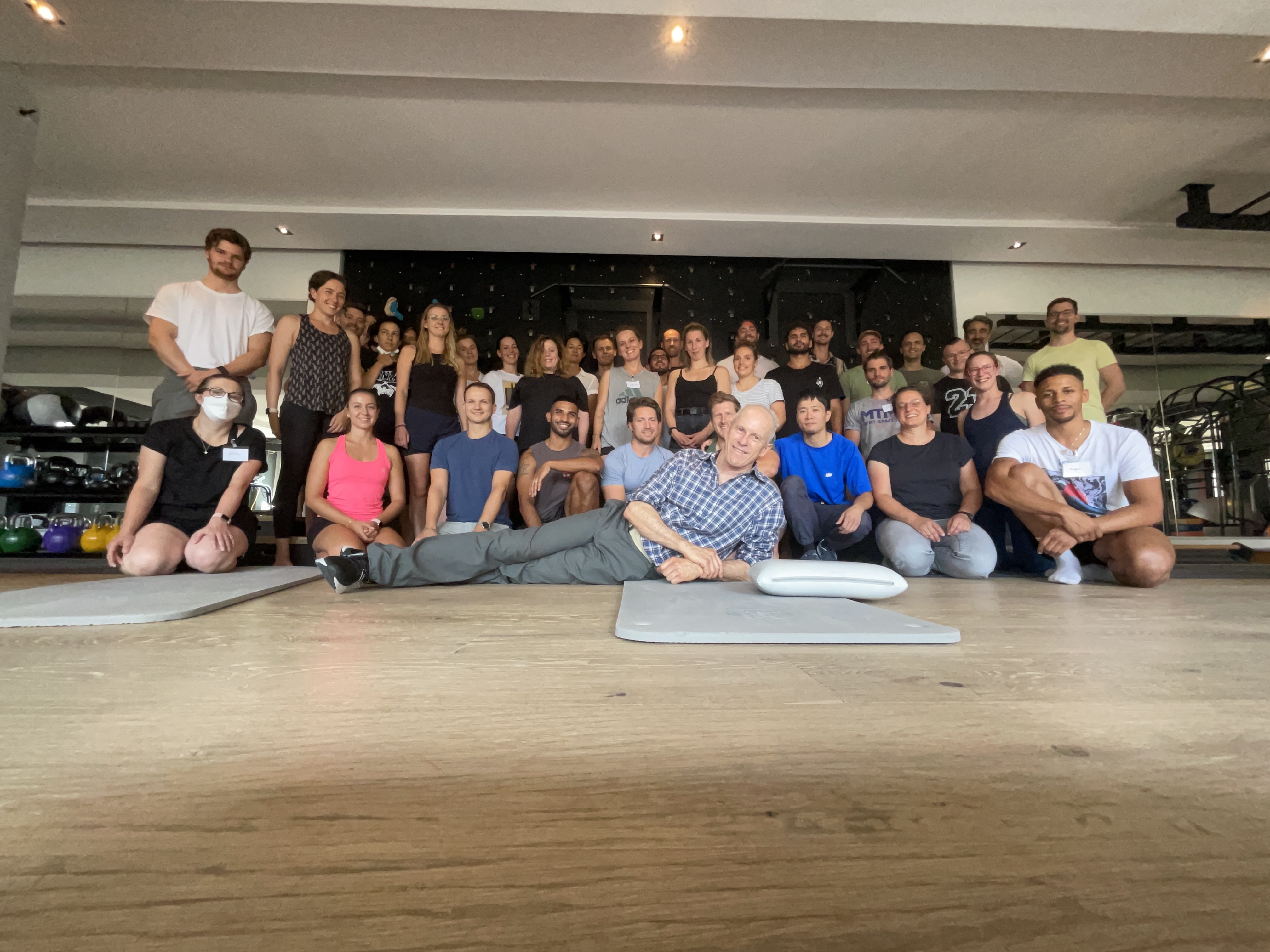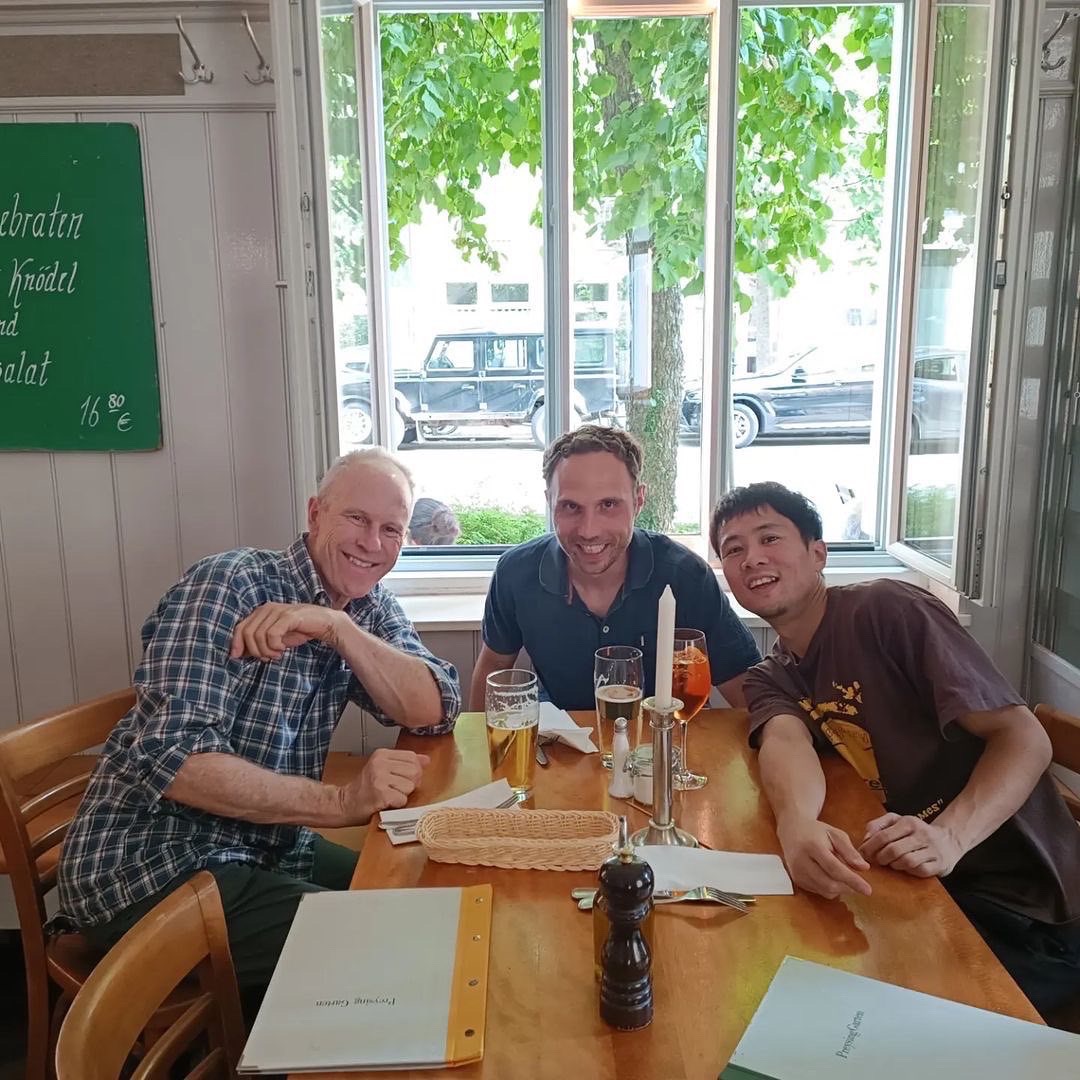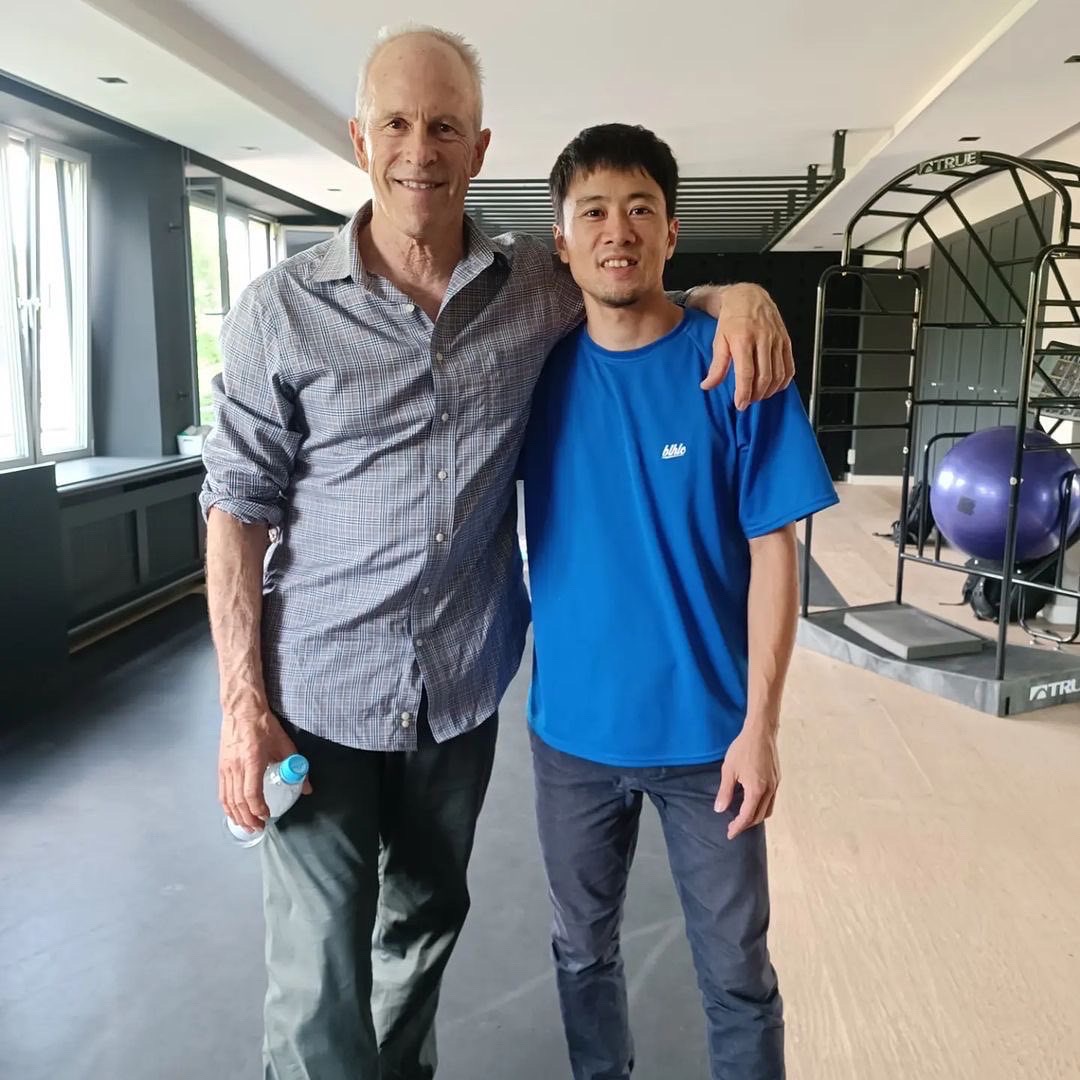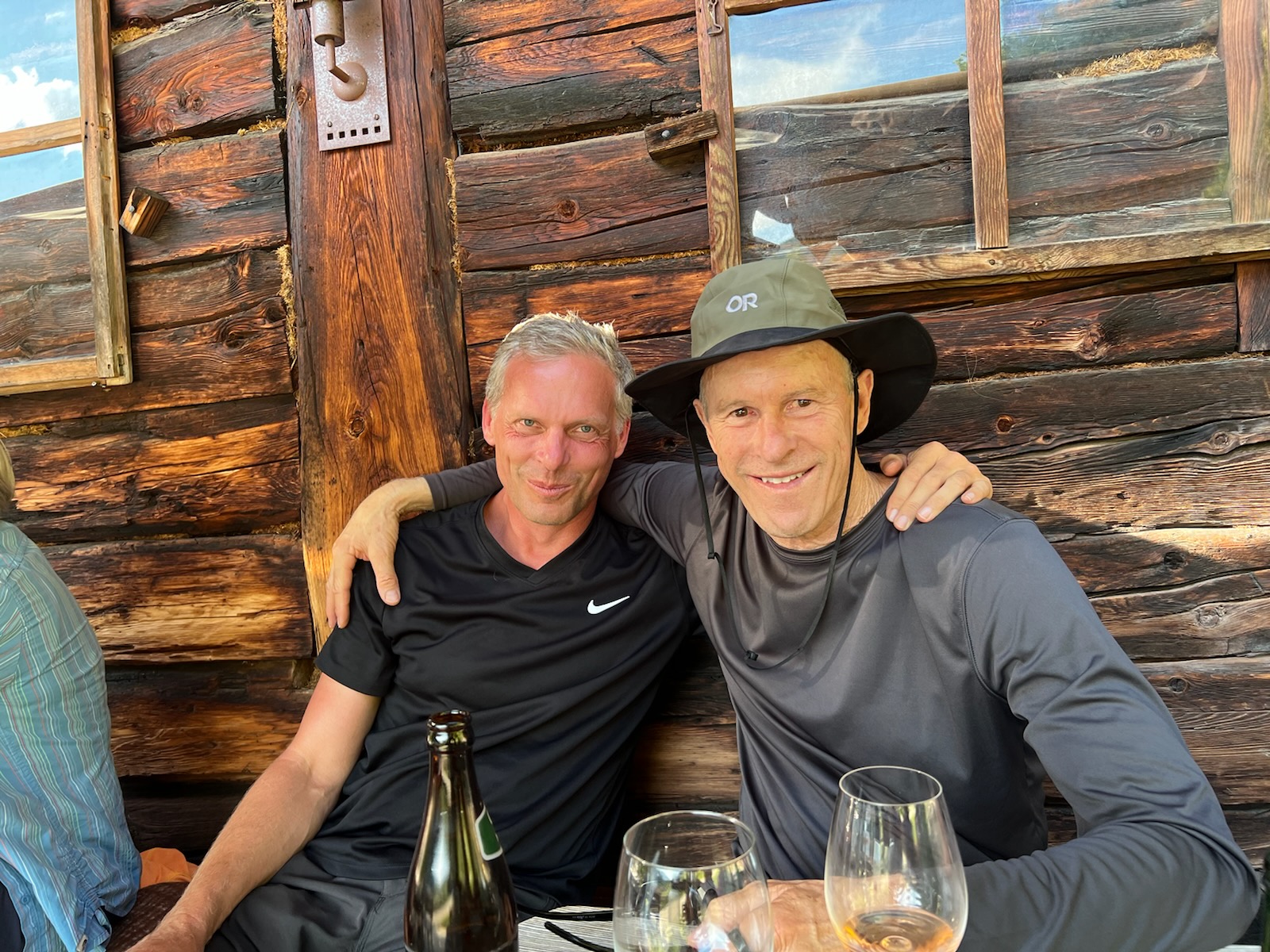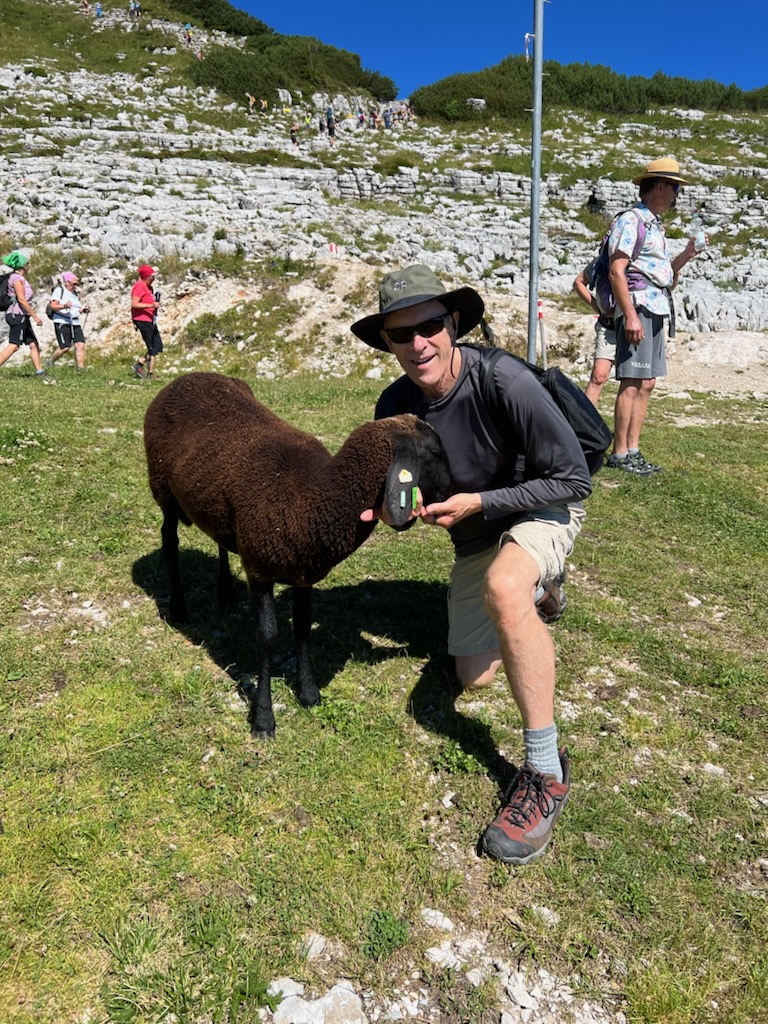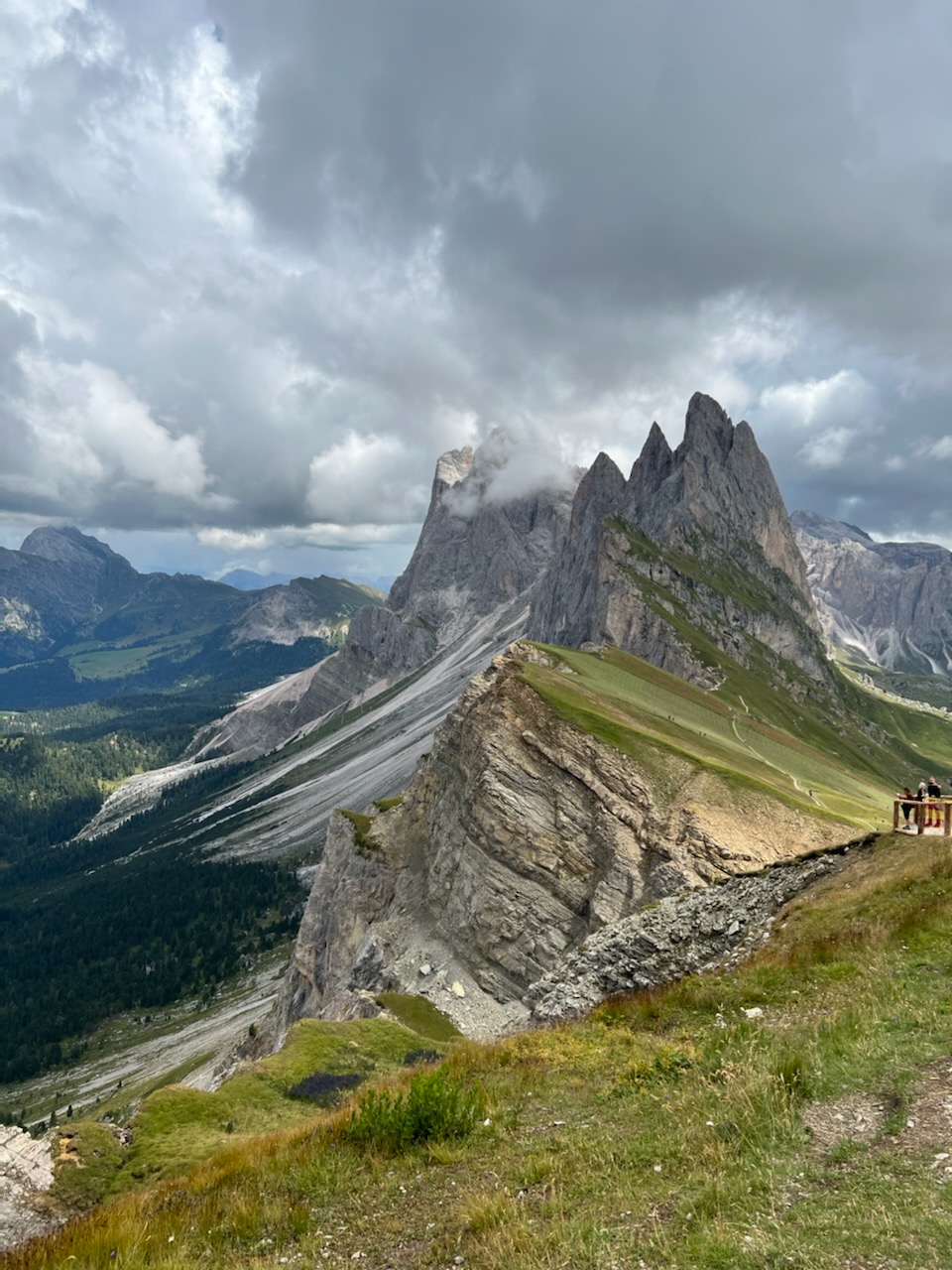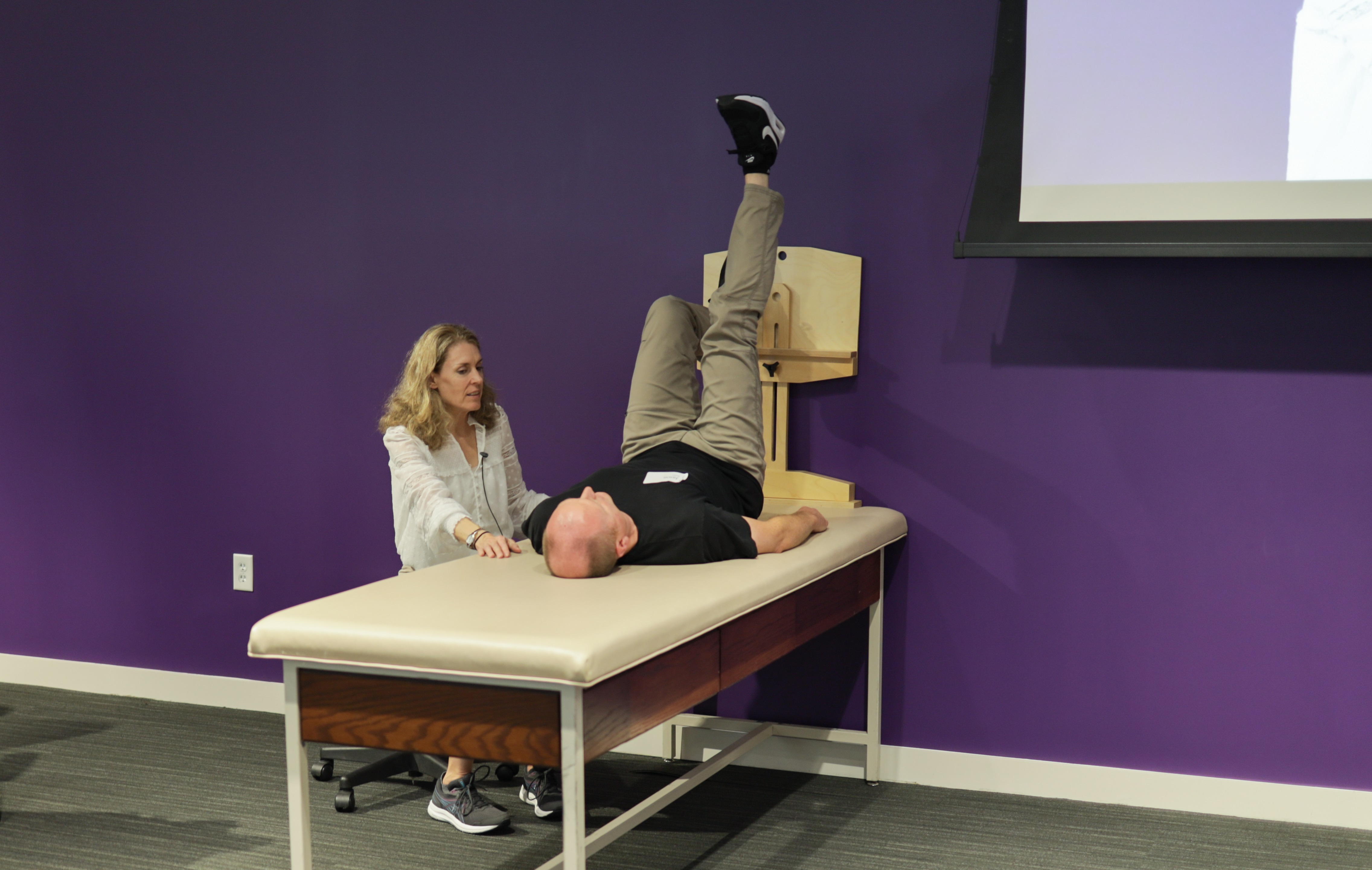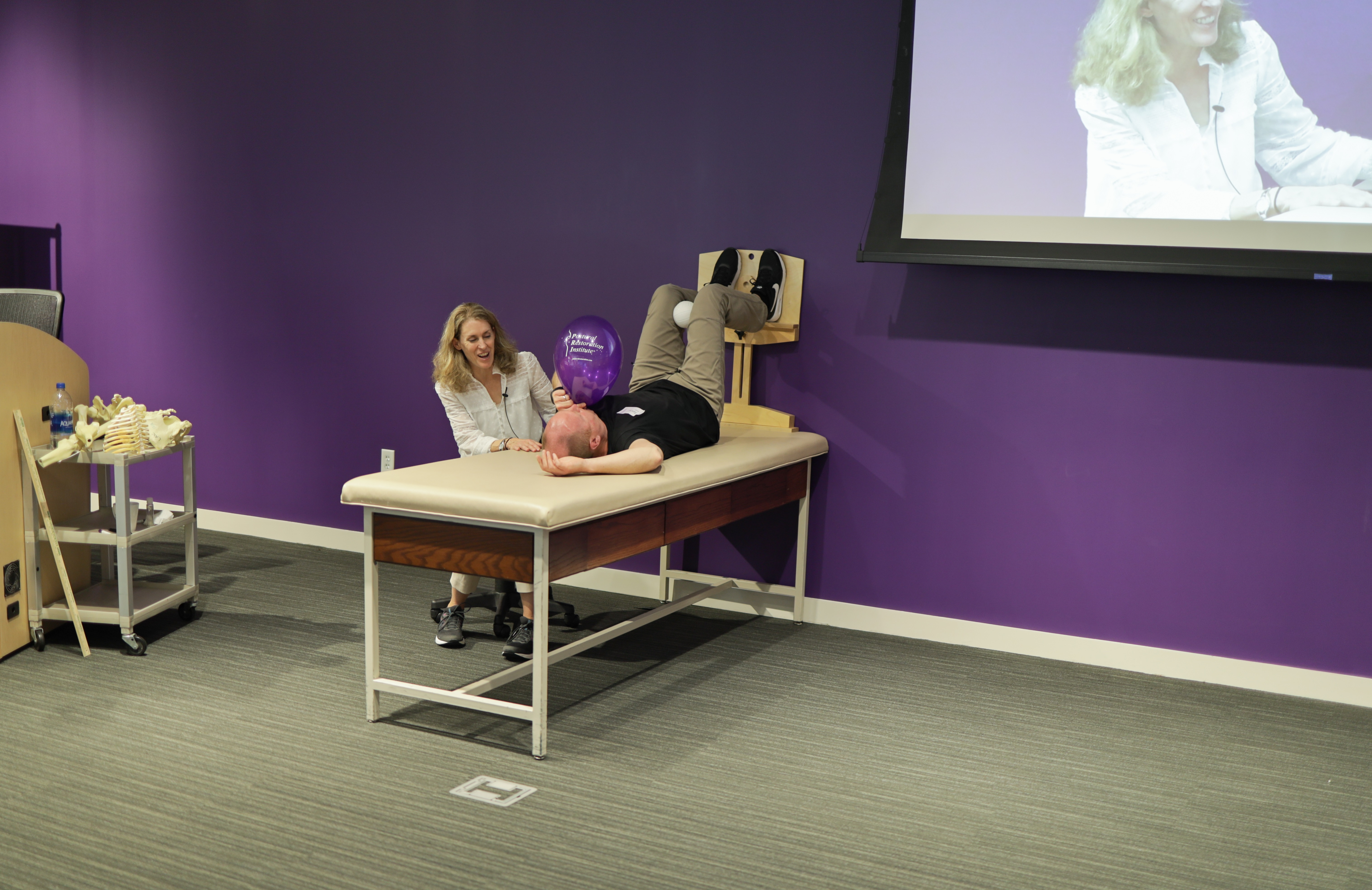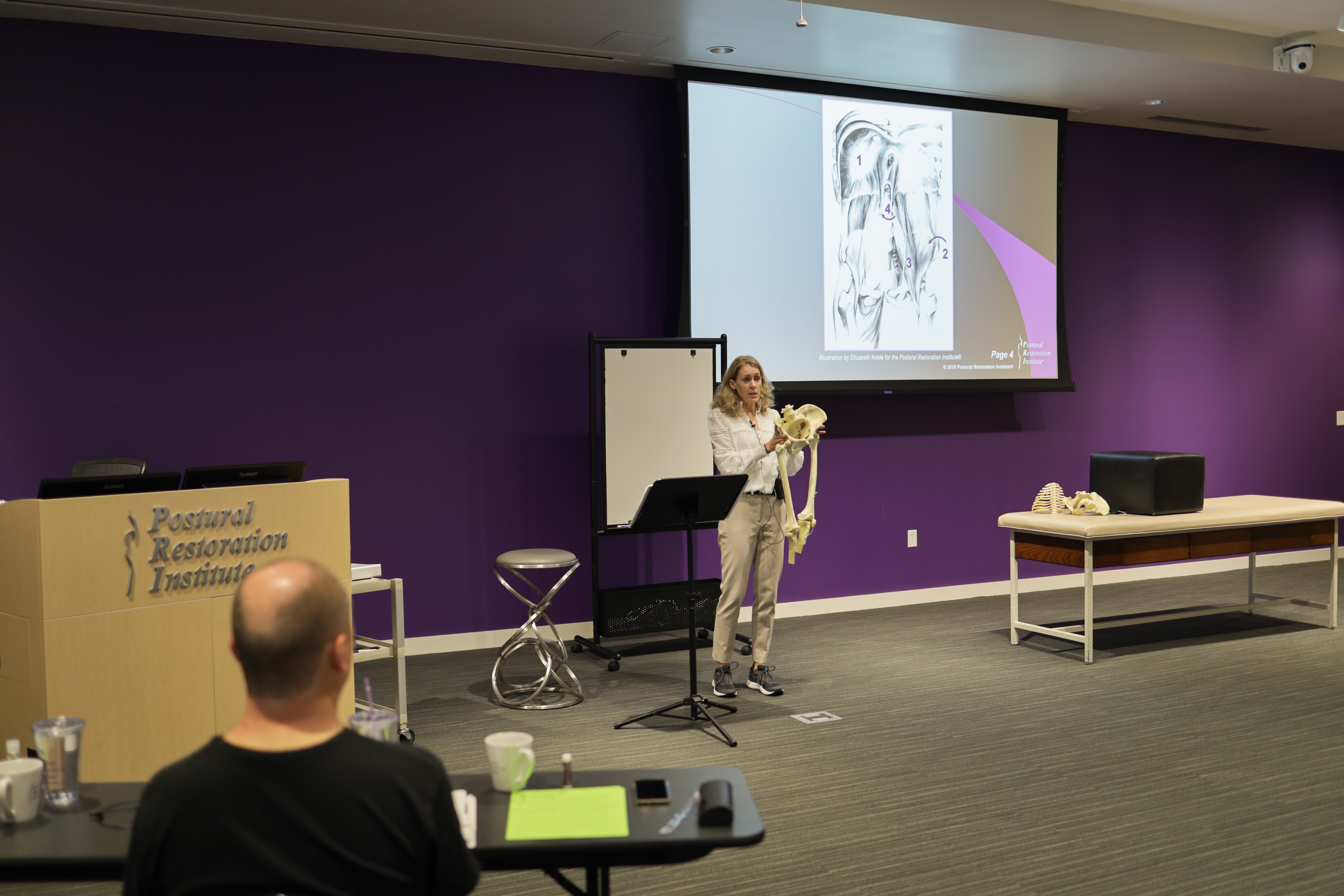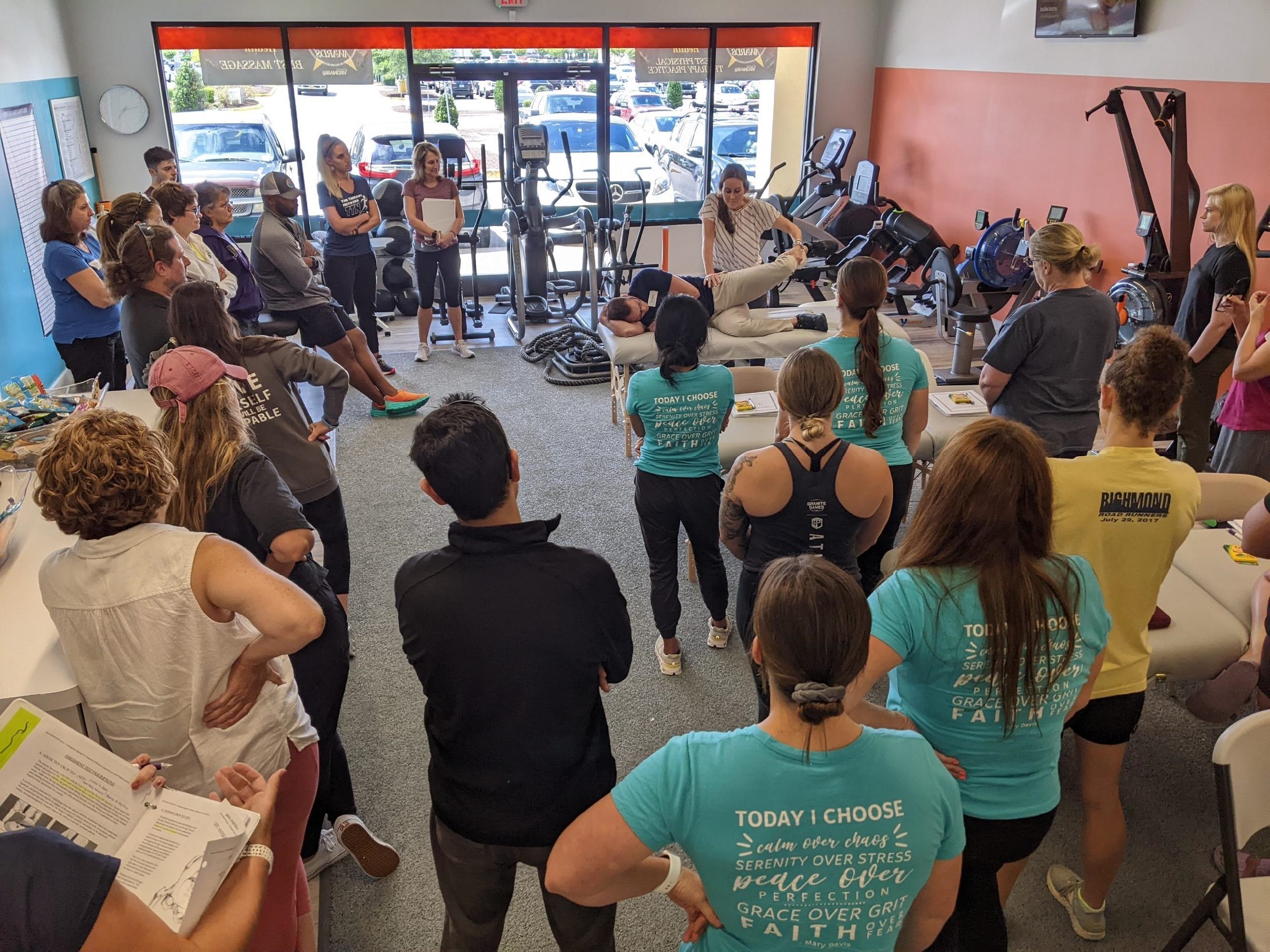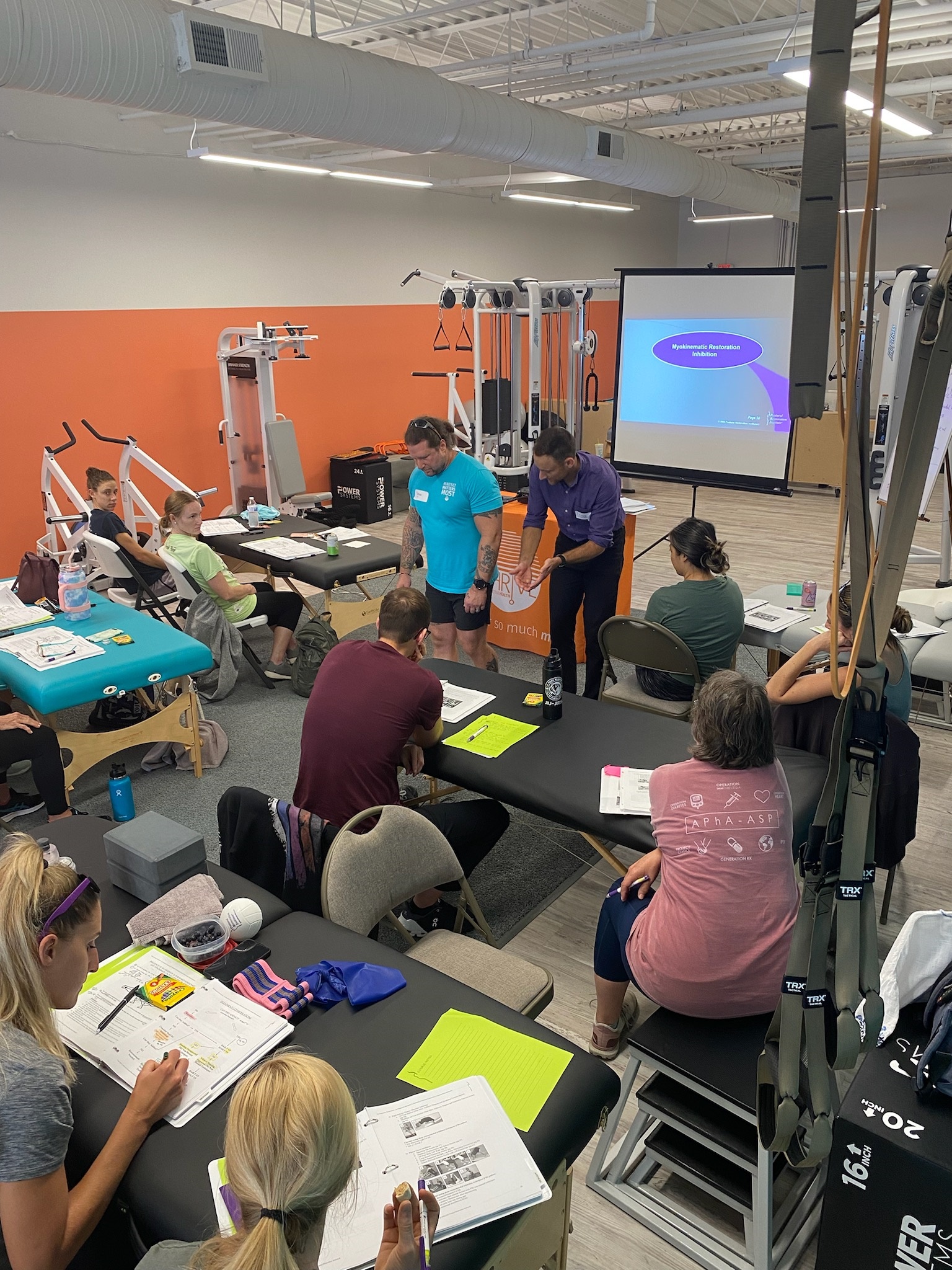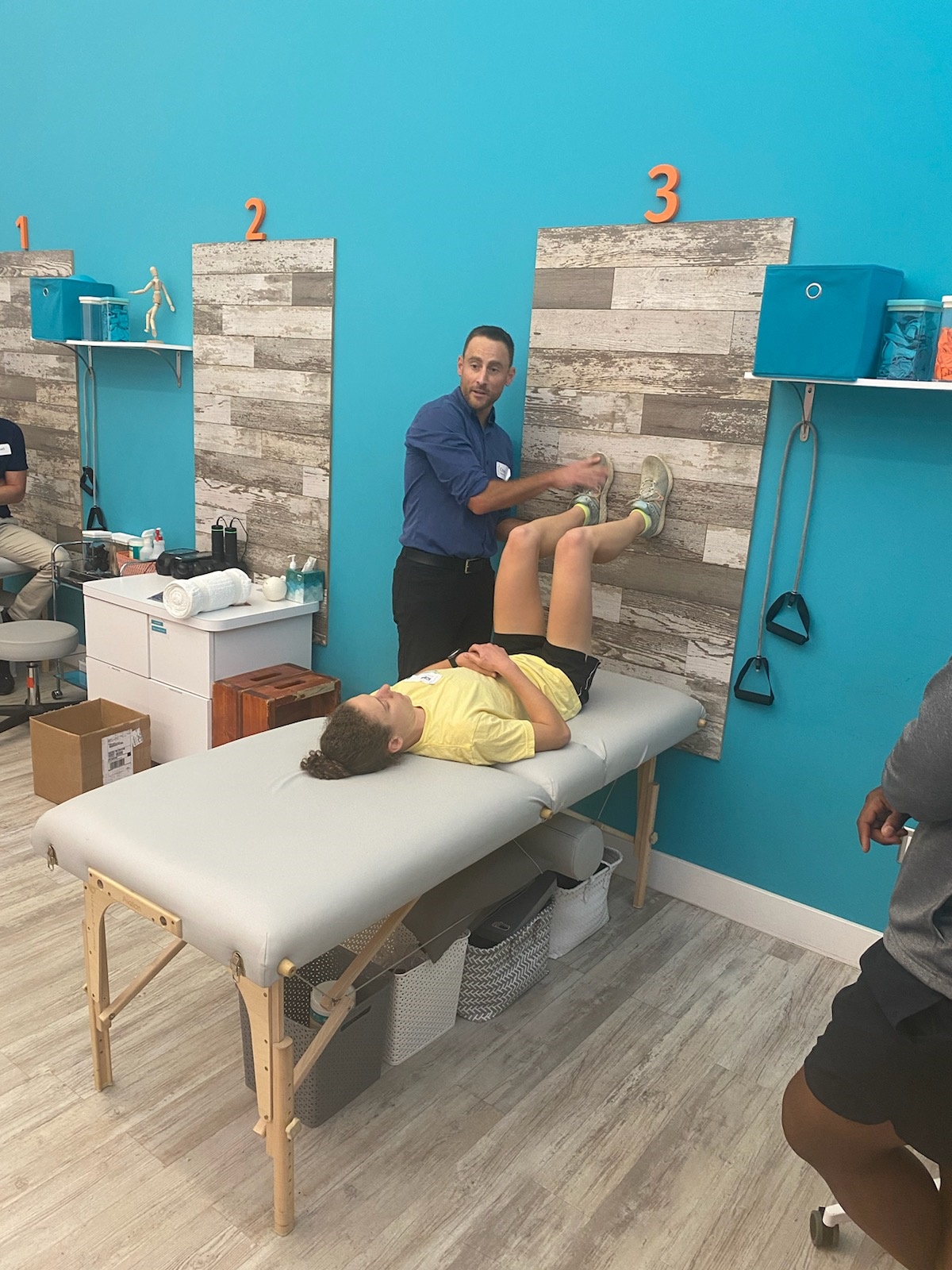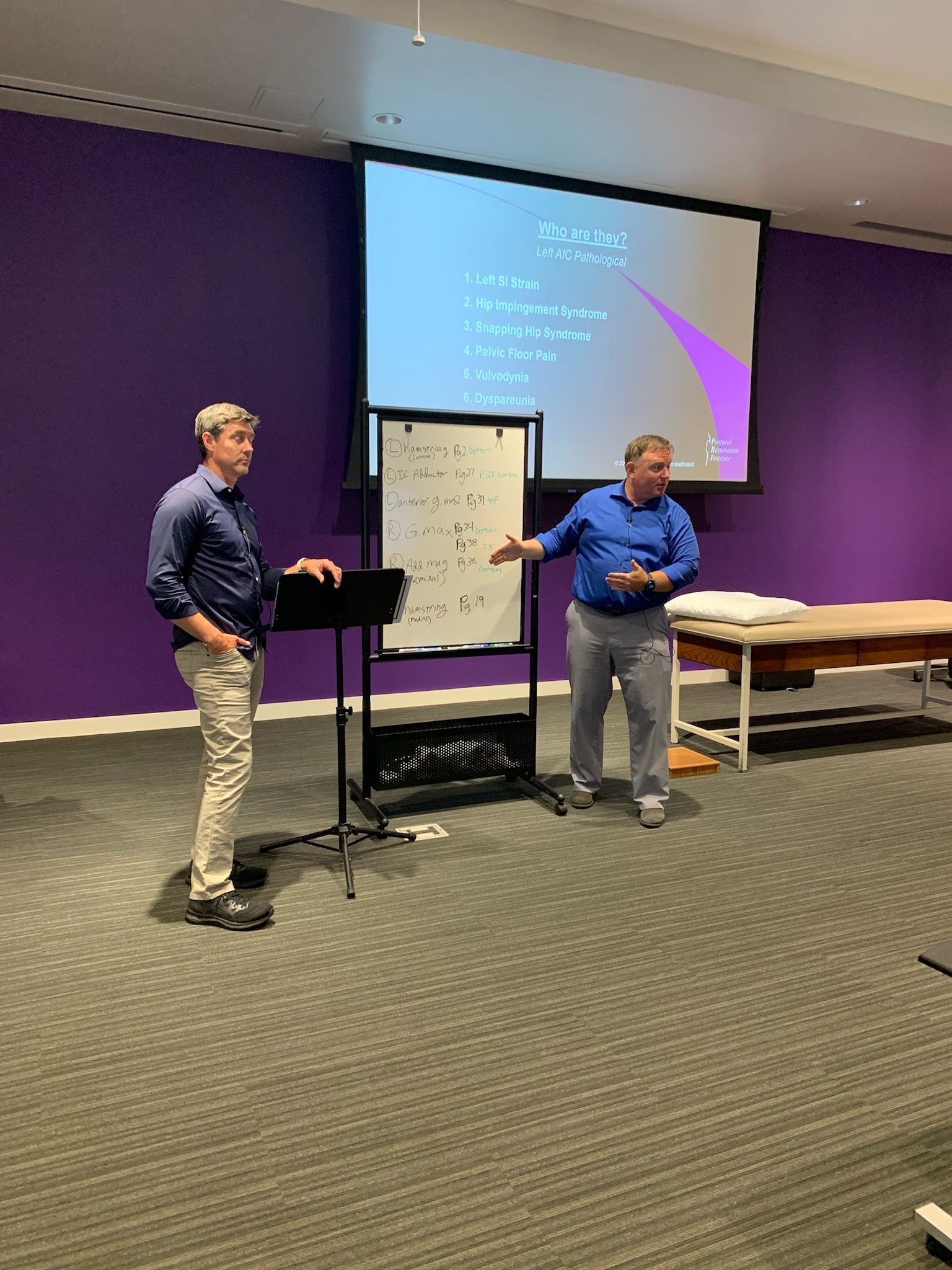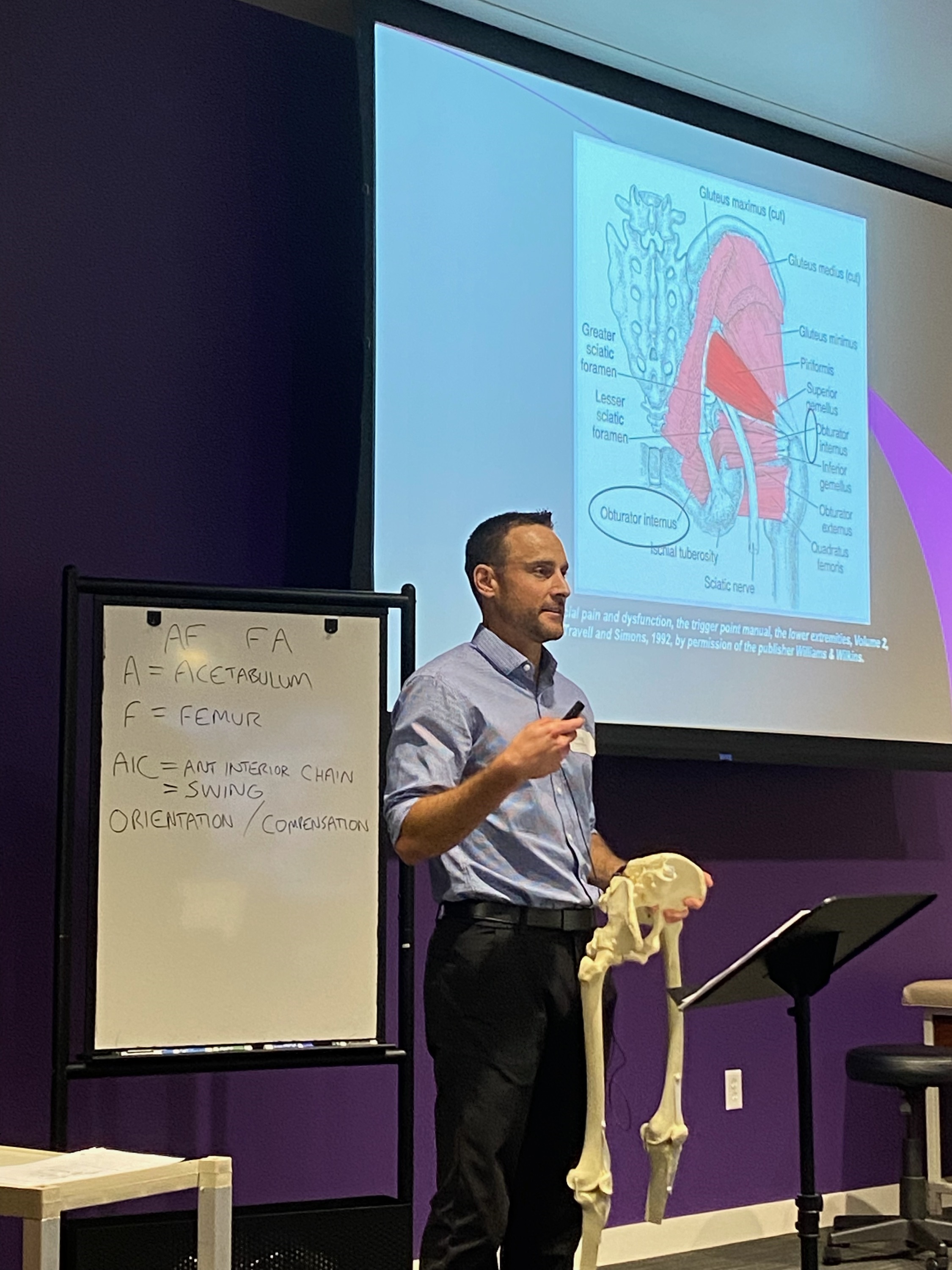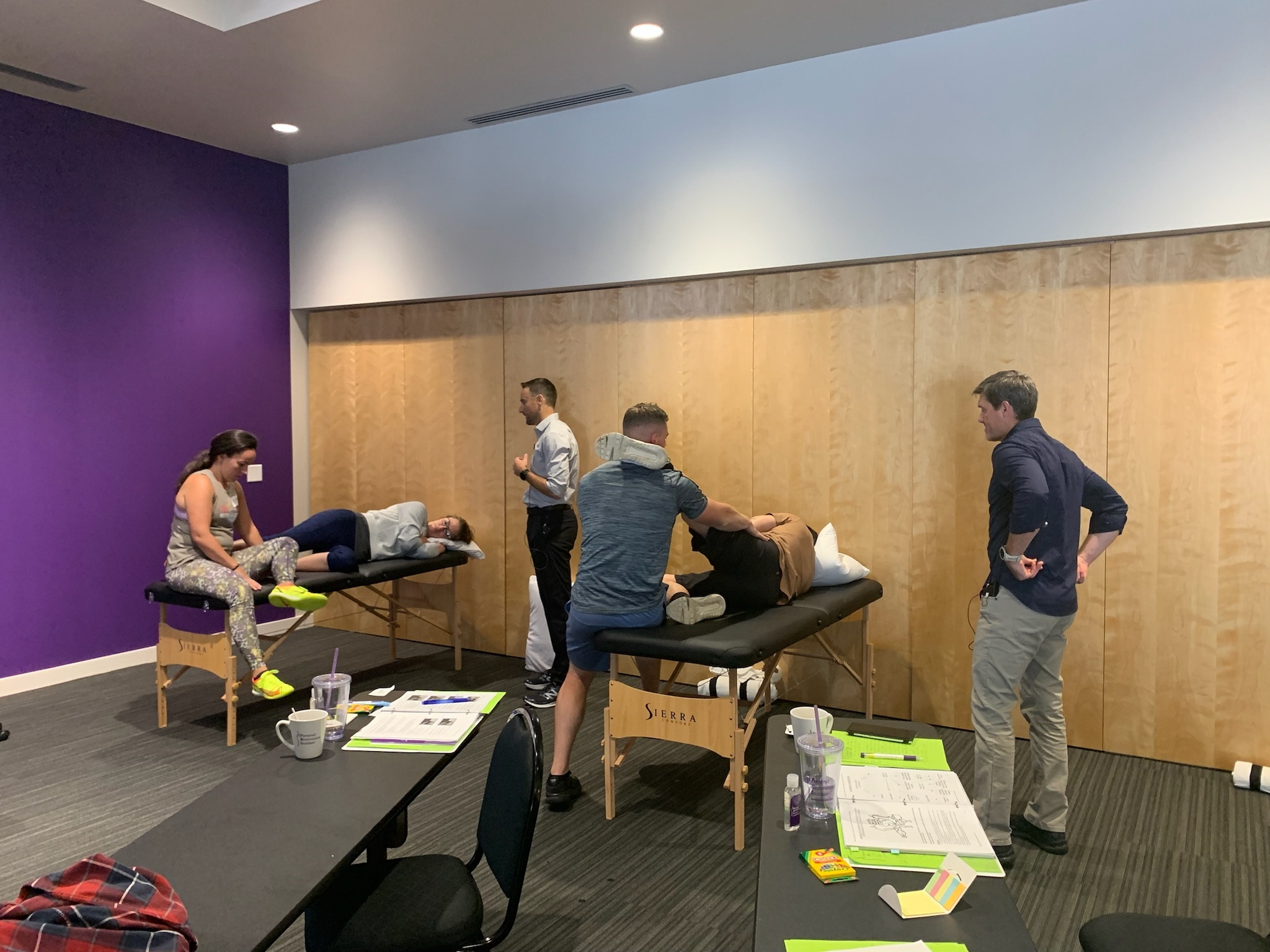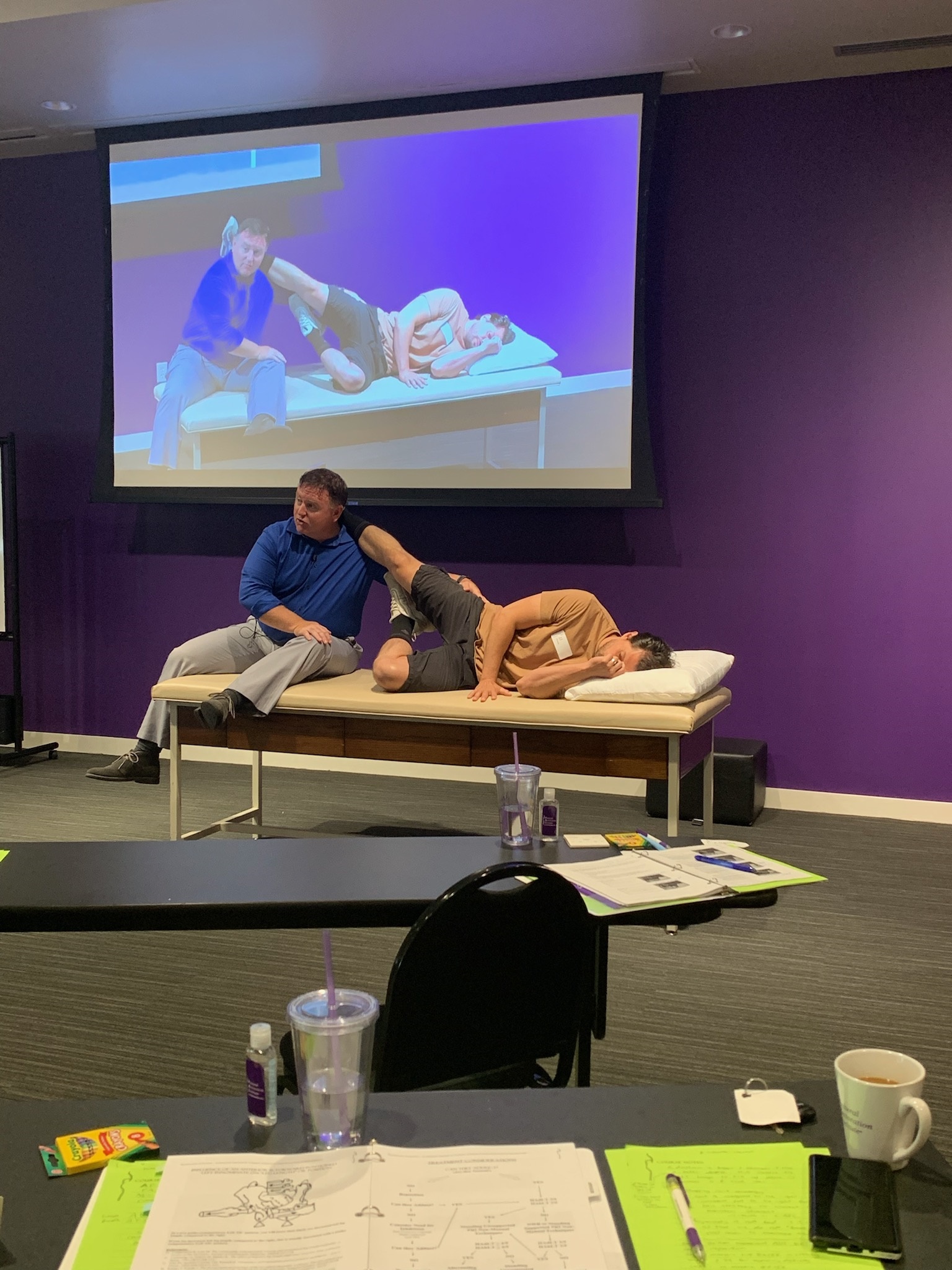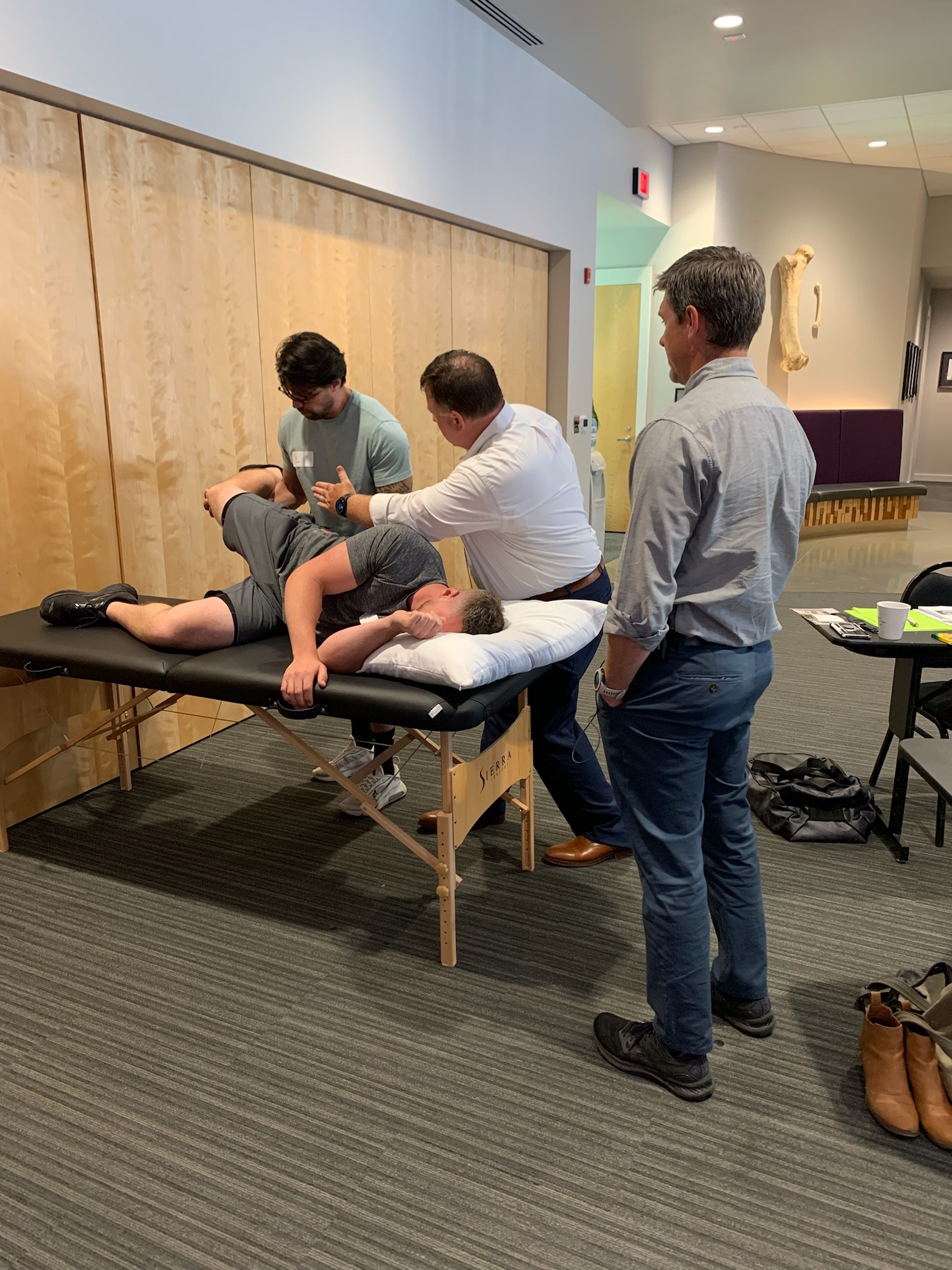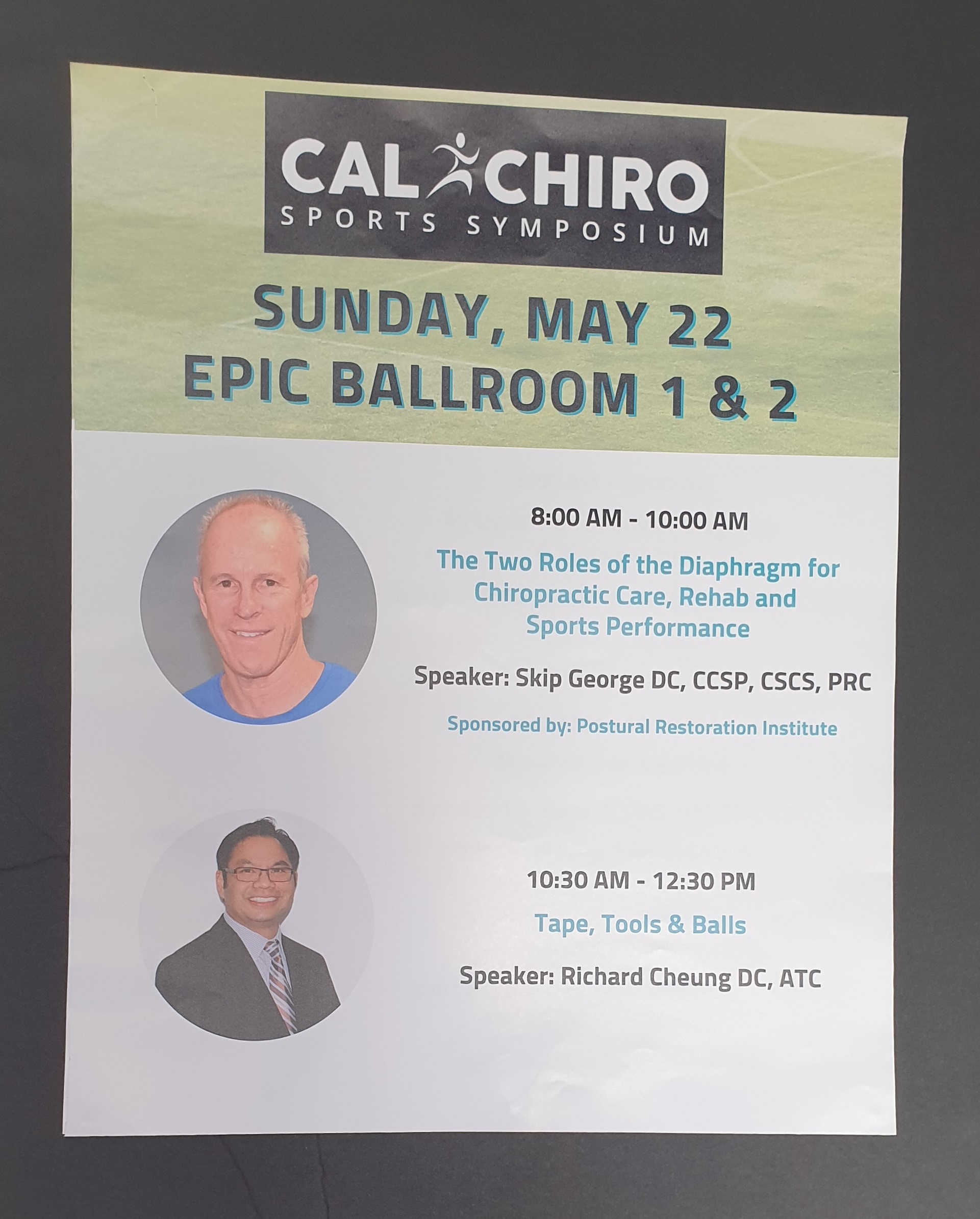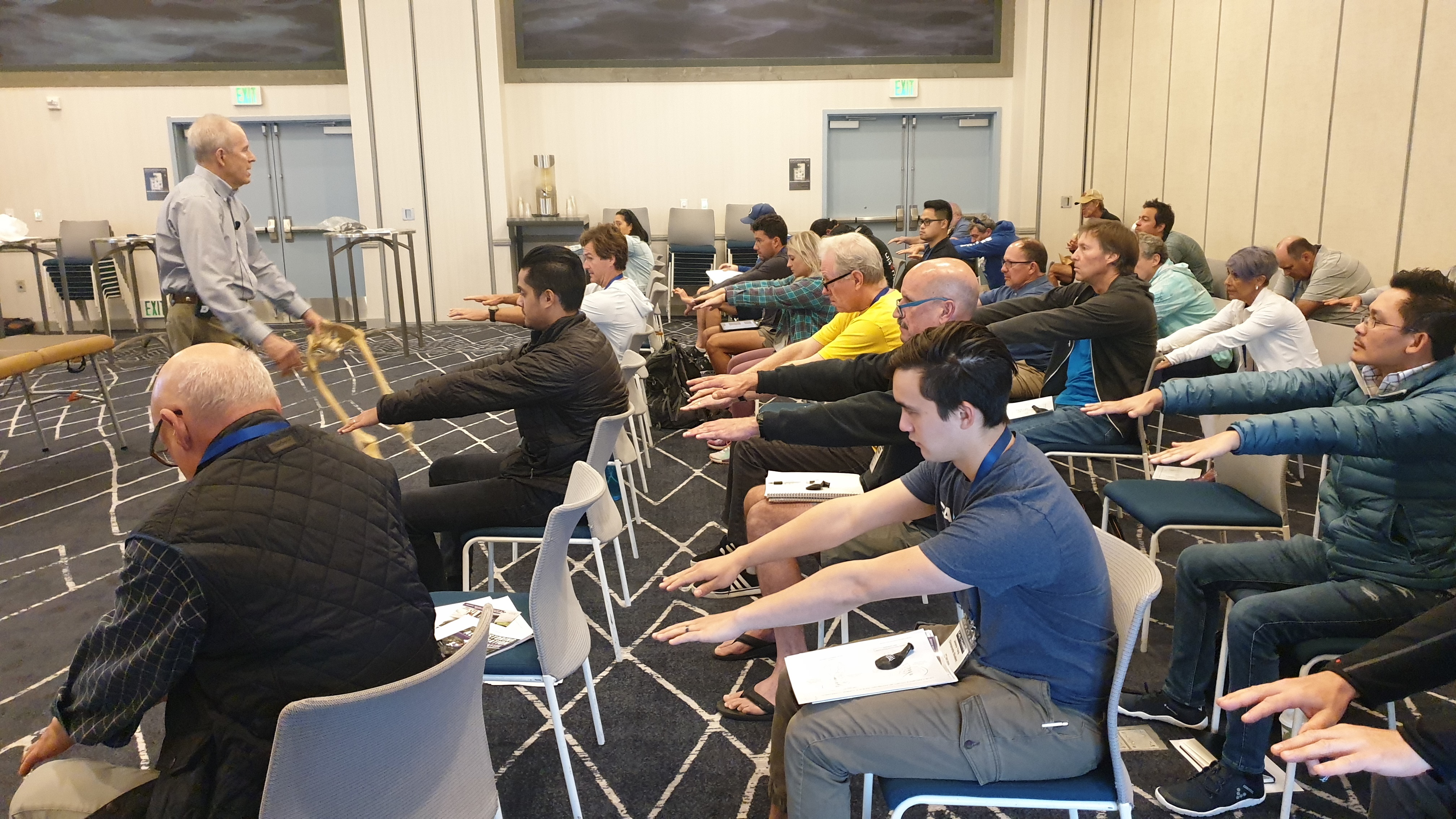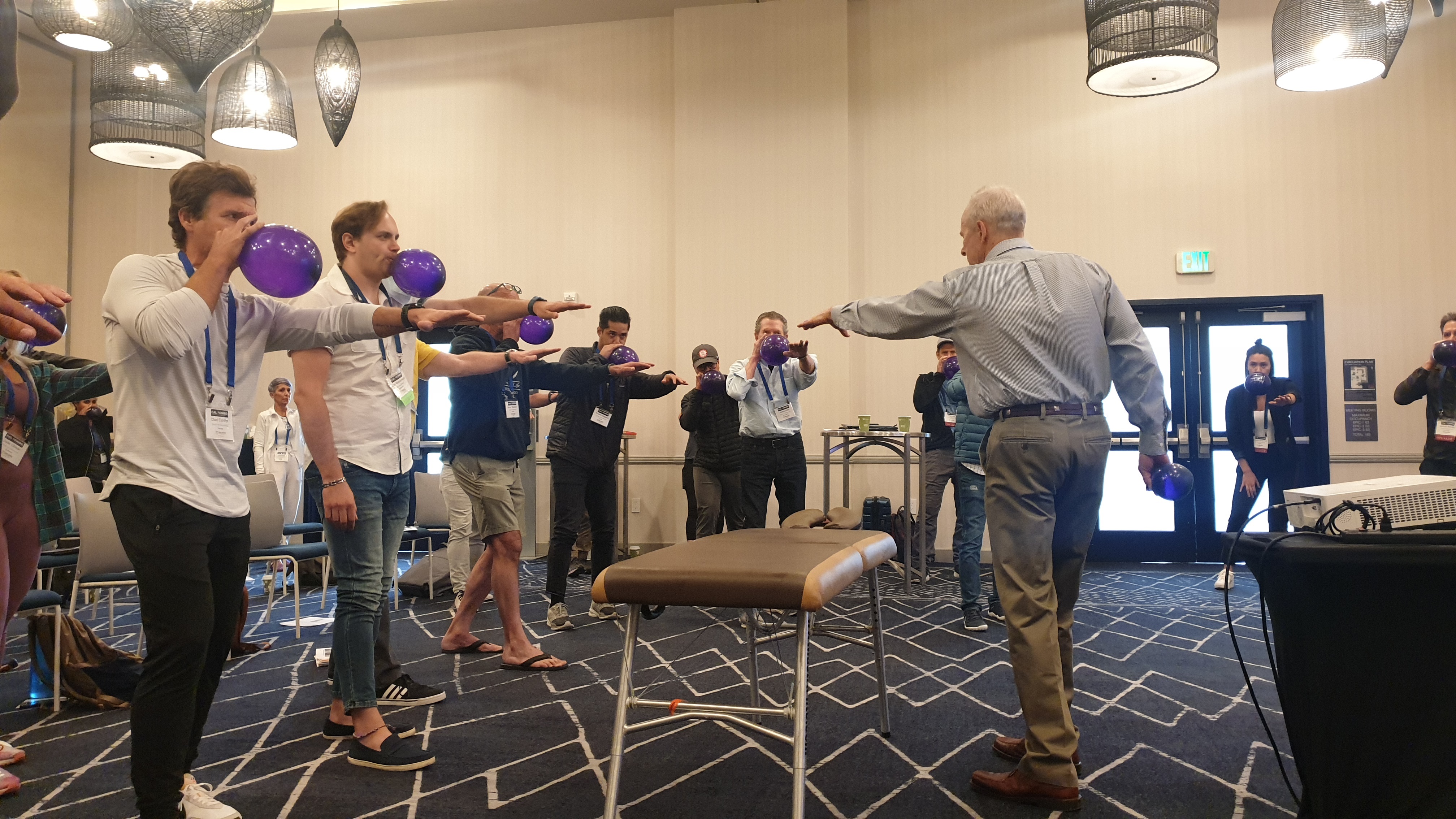What a wonderful time Ron and I had in Chapel Hill North Carolina last weekend with the first offering of the Pediatric Evolution: An Integrated Approach to Optimizing Functional Development and Upright Growth secondary course. We welcomed the cooler fall weather and were graciously hosted by the crew at Advance Physical Therapy: Jean Masse, Susan Henning, Joe Belding, Molly Miller, Heather McLaughlin, and Phil DeNigris.
With an intimate and in-person group, we were able to have some fascinating discussions about the sequencing of human sensory motor development during the first several years of life, and how these components are influenced by specific developmental processes, for example: tonic neck reflexes, lower extremity extension, visual and central auditory processing, stomatognathic sensorimotor shifting, vocal communication, cognitive processing and how this integration is engrained through kinesemiotic experiences (unrestricted movement, joy and fun!)
We were reminded about the evolution of theories of motor control and what we know about how movement develops, from reflexive survival skills to functional motor performance to adaptations and neuroplasticity. Nine well-referenced principles of how sensory motor skills and the developmental processes listed above are integrated for bi-hemispheric, bi-lateralized, and bilaterally sensed behavior were presented. A sampling of these includes Hemispheric Specialization Relating to Perceptual Patterning, Functional Asymmetry Development, Functional Cortical Dominance, Forces of Gravity on Neuro-developmental Sensory Motor Sequences, and principles of Neuroadaptation. A formal appreciation of Sense of Self develops early and lasts throughout the lifespan, which makes this course relevant and important for patients, clients, and humans of all ages.
Many thanks again to our accomodating hosts for great hospitality, super snacks, and an enviroment that respected the individuals and the tasks. (Did you catch the Dynamic Systems Theory pun?) Special thanks to Jennifer Smart for her valuable contributions to both the creation and presentation of the course, and also to Carrie Vande Berg, Eric Menchi, Steven Blair, Brandon Byrne and Kyle Langworthy For catalyzing discussions which richly enhanced our teaching.

